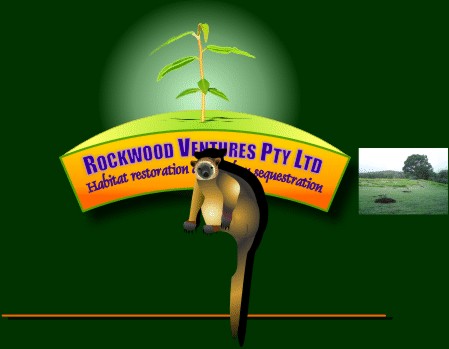
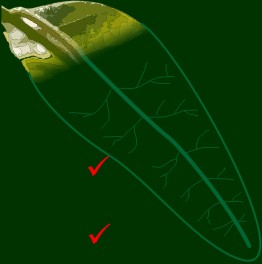
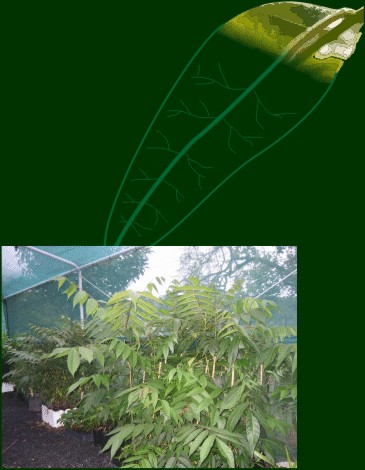

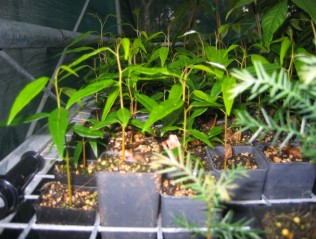
True Honduran Mahogany (Swietenia mahogani) seedlings in the shadehouse
Mahogany (Swietenia macrophylla) seeds
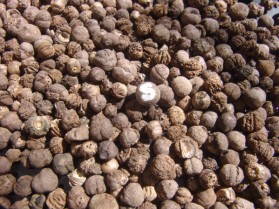
Teak (Tectona grandis) seeds being conditioned for germination
Red Cedar (Toona ciliata) seedlings in the shadehouse
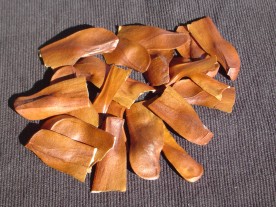
“...Wood is a complex, fibrous bio-polymer that is produced naturally as a result of the growth of shrubs and trees [1]. It can vary in density by almost an order of magnitude. It can be supple enough to weave into baskets and rigid enough to build houses and, once pulped, it can be formed into paper. Chipped into a variety of particles and combined with glues, it can be machined into strong construction materials, soft, sound absorbent blocks or hard, decorative mouldings. Wood is almost unique in being renewable – it is possible to regrow what we use...”
R.W. Mathews (2007) [2]





References
[1] – Dinwoodie, J.M. (1989) Wood: Nature’s Cellular, Polymeric Fibre-Composite. Institute of Metals, London.
[2] – Mathews, R.W., Robertson, K., Marland, G. and Marland, E.Carbon in Wood Products and Product Substitution. Forestry and Climate Change (2007), 91-104
One of our primary objectives is to establish a seed orchard in order to provide seed for our own seedlings, and also for other carbon sink, reforestation, and forestry projects worldwide. From this orchard, we will provide viable, endangered, native and exotic tree species, seed with local provenance for Far North Queensland. While our focus is
replacement of the world's valuable timber trees, especially the pioneer species – the pillars of the rainforest; we also grow native tree species that provide a food source (fruit and leaf) for the endangered native birds and animals of the wet tropics. Animals such as Lumholtz tree-kangaroo (Dendrolagus lumholtzi), cassowary, and the green ringtail possum (Pseudochirops archeri) occur naturally in the area, but their numbers are dwindling due to lack of habitat.
We have been germinating and nurturing seedlings since 1999. Our greenhouse and shadehouse are primarily intended for production to meet our plantation requirements; however, there will be stock available in the future for selected customers who are taking up our model in the region. There is also potential for this aspect of the business to expand to meet market demand.
Seed
Seedlings
All Rockwood Ventures timber will be used exclusively for building and cabinetry, fine furniture, musical instruments and wooden boat building whether in our own workshops or by selected and certified artisans and timber merchants. Our aim is to ensure that timber extracted from our forest is only used for quality products intended to last for generations. Apart from the ethical imperative for this choice,
it also ensures that carbon sequestered in our timber will remain out of the atmosphere for the longest possible time.
Tree Species Selection
Our rainforest is a mixed species forest (the way nature intended) comprising tree species selected on the following four criteria:
Native rainforest timber species whose numbers have been seriously degraded by past unsustainable forestry practices for example, Australian red Cedar (Toona ciliata).
Native rainforest species that provide a food or habitat source for endangered native wildlife such as the Blue quondong (Eleocarpus grandis), a rich food source for cassowaries and tree kangaroos.
Rare/threatened exotic rainforest timber species that are either commercial extinct or under significant threat for example the original mahogany (Swietennia mahogani).
Valuable rainforest cabinet timber species such as rosewood (Dalbergia latifolia).
The rainforest will be strictly managed using a Continuous Cover Forestry system and we intend to lock future generations into this regime via a strict profit a prendre covenant attached to the property title in perpetuity. It is our intention that the Environmental Protection Agency (EPA) or its equivalent will retain the right to audit operations to ensure compliance. The fundamental requirement is that 80% of the forest will be managed on a 40 year cycle of incremental harvesting and planting at 2% per annum. The remaining 20% will be select 'pillars of the rainforest' species to maintain an ecosystem framework, including food sources for endangered native fauna. In simple terms, for every 1000 trees grown (approximately 10 acres), 20 will be planted and 20 harvested each year (commencing at the 20 year mark) under a Continuous Cover Forestry regime. This will minimise disturbance of the rainforest ecosystem, once established and ensure that most of the forest – with the exception of selected long lived old-growth forest framework specimens – will be maintained at the peak age range for carbon sequestration.
All trees selected for harvesting will first have wildlife removed and relocated to similar species elsewhere in the forest. Timber production is anticipated to commence in 2025. All timber will be quarter sawn and kiln dried in a solar kiln to provide maximum dimensional stability to ensure products produced from our timber can last for generations.
Our Boutique Timber









